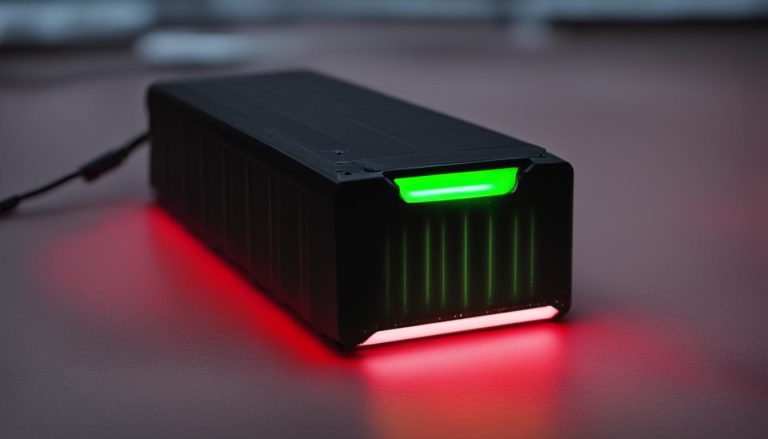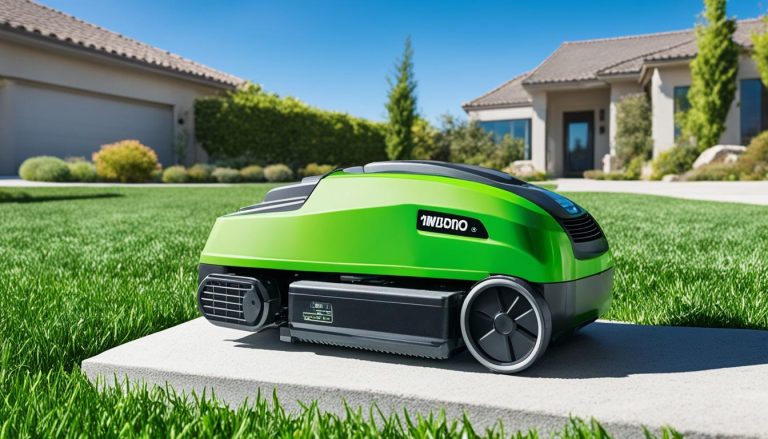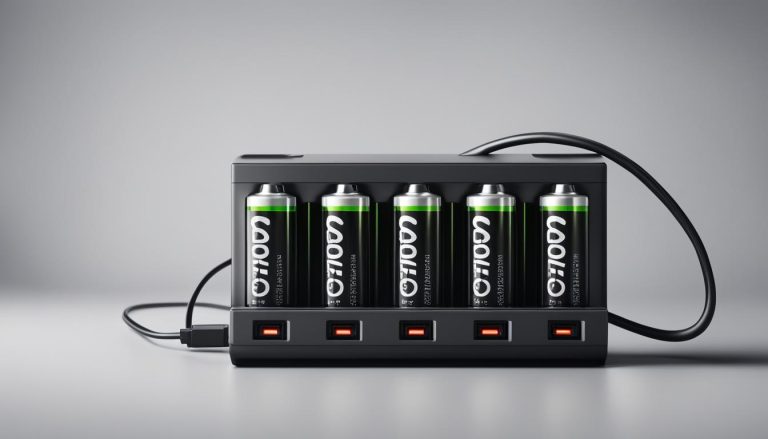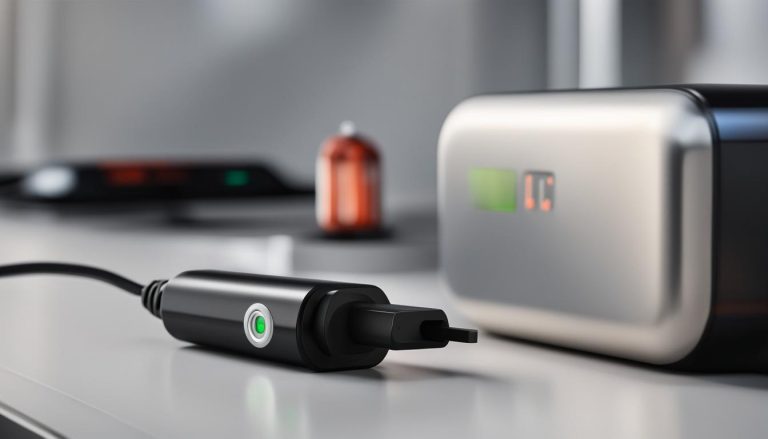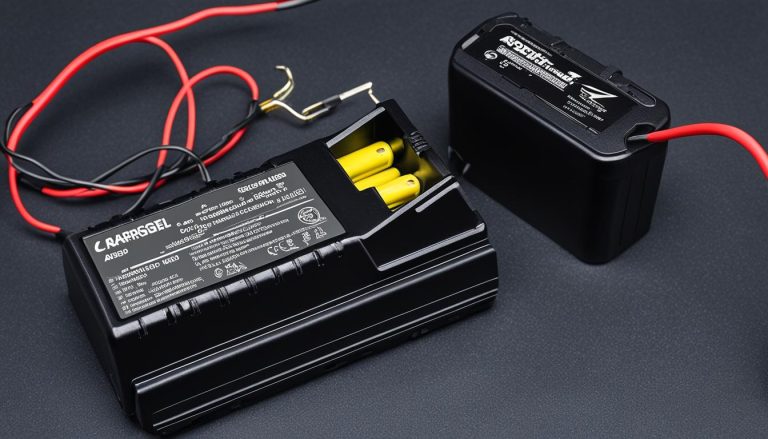Charging Time for Lithium Batteries Explained
batterychargers.site and its partners may earn a commission if you purchase a product through one of our links
Are you wondering how long it takes to charge a lithium battery? The charging time for lithium batteries can vary depending on several factors. Let’s dive into the details to understand the optimal charging time for these energy cells.
Lithium batteries undergo a chemical reaction during charging, involving the flow of energy between the anode and cathode. Capacity fade, which refers to a decrease in battery capacity over time, can occur due to ions getting trapped, internal corrosion, or parasitic reactions.
Compared to lead acid chargers, Li-ion chargers have higher voltage per cell and stricter voltage tolerances. The recommended charge rate for Energy Cells is between 0.5C and 1C, with a complete charge time of about 2-3 hours. Full charge is reached when the current decreases to 3-5 percent of the ampere-hour (Ah) rating.
While it may be tempting to fully charge lithium batteries, it can actually stress the battery. Some consumer chargers adopt a “charge-and-run” method that stops at 85% state-of-charge, while certain industrial chargers set the charge voltage threshold lower to prolong battery life. It’s important to monitor the battery temperature during charging and discontinue use if it rises more than 10ºC under moderate charging speeds.
Key Takeaways
- The recommended charge rate for lithium batteries is between 0.5C and 1C.
- Full charge is reached when the current decreases to 3-5% of the ampere-hour (Ah) rating.
- Avoid fully charging lithium batteries to avoid stressing the battery.
- Some consumer chargers use a simplified “charge-and-run” method that stops at 85% state-of-charge.
- Monitor the battery temperature during charging and discontinue use if it rises more than 10ºC under moderate charging speeds.
Factors Affecting Lithium Battery Charging Time
The charging time for lithium batteries can be influenced by various factors. One crucial factor is the type of cathode material used in the battery. Lithium batteries can be categorized as cobalt-blended or non-cobalt-blended, and this classification determines the voltage per cell and the tolerance for charging. Additionally, different lithium-ion chemistries exhibit distinct charge characteristics.
Charging the battery at a higher current can quickly fill it up to around 70 percent, but the saturation charge during Stage 2 will take longer. It’s worth noting that Li-ion batteries do not necessarily need to be fully charged, as a high voltage can stress the battery. Therefore, it is important to choose the correct voltage threshold and ensure that the battery does not undergo overcharge.
Efficiently charging lithium batteries requires considering the recommended charge rate, closely monitoring the temperature rise during charging, and taking precautions to avoid deep discharges or overcharging. By adhering to these guidelines, you can effectively charge your lithium battery while maximizing its lifespan and performance.
Factors Affecting Lithium Battery Charging Time:
- Type of cathode material: cobalt-blended or non-cobalt-blended
- Lithium-ion chemistry
- Charging current
- Voltage threshold
- Temperature rise during charging
- Deep discharges and overcharging
“Efficiently charging lithium batteries requires considering the recommended charge rate, monitoring the temperature rise during charging, and avoiding deep discharges or overcharging.”
| Factors | Impact |
|---|---|
| Type of cathode material | Determines voltage per cell and charging tolerance |
| Lithium-ion chemistry | Affects charge characteristics |
| Charging current | Quickly fills battery to around 70 percent |
| Voltage threshold | Ensures battery does not undergo overcharge |
| Temperature rise during charging | Should be monitored to prevent excessive heat |
| Deep discharges and overcharging | Should be avoided to maintain battery health |
Charging Lithium Batteries for Solar Power Systems
Lithium-ion batteries are commonly used in solar power systems. When it comes to optimizing the use of lithium batteries in solar applications, understanding the charging cycles is crucial. Luckily, charging lithium batteries with solar power is a viable option that offers sustainable energy solutions.
There are two main methods for charging lithium batteries with solar power. The first involves adding battery storage to an on-grid solar system, allowing you to store excess energy generated by the solar panels for later use. The second method is using solar batteries for off-grid living, enabling you to rely solely on solar power.
To ensure efficient charging and protection of lithium batteries, solar charge controllers such as the Victron Energy SmartSolar MPPT charge controllers are highly recommended. These charge controllers are designed specifically for charging lithium batteries with solar power and offer various voltage settings for different stages of charging, including bulk, absorption, and float stages.
It’s important to consider several factors when charging lithium batteries with solar power. The discharge control circuit and the impact of high charge and discharge currents should be taken into account. Additionally, monitoring and limiting the battery temperature during charging is crucial for the longevity and performance of the batteries.
Remember that shallow discharge cycles are beneficial for the lifespan of lithium batteries, while deep discharges should be avoided to prevent irreversible damage. Proper storage and avoiding overcharging are also key factors in maintaining the health and efficiency of lithium batteries in solar power systems.
FAQ
Q: How long does it take to charge a lithium battery?
What is the optimal charging time for a lithium battery?
The optimal charging time for a lithium battery is typically around 2-3 hours. This ensures that the battery reaches its full charge without overcharging, which can stress the battery and reduce its lifespan.
How do I charge a lithium battery efficiently?
To charge a lithium battery efficiently, it is important to follow the recommended charge rate, monitor the battery temperature during charging, and avoid deep discharges or overcharging. It is also recommended to choose the correct voltage threshold to prevent stressing the battery.
Can I fully charge a lithium battery?
It is generally better not to fully charge a lithium battery to avoid stressing the battery and reduce its lifespan. Some consumer chargers use a simplified “charge-and-run” method that charges the battery to 85% state-of-charge, which can help prolong the battery’s life.
How do I charge lithium batteries with solar power?
To charge lithium batteries with solar power, it is recommended to use solar charge controllers, such as the Victron Energy SmartSolar MPPT charge controllers. These controllers have specific voltage settings for bulk, absorption, and float stages, ensuring efficient and safe charging of the batteries.
What are the factors that affect lithium battery charging time?
Several factors can affect lithium battery charging time, including the type of cathode material, the lithium-ion chemistry used, and the charging current. Charging at a higher current can fill the battery quickly to about 70%, but the saturation charge during Stage 2 will take longer.
What are the charging cycles for lithium batteries in solar power systems?
In solar power systems, it is important to understand the charging cycles of lithium batteries to optimize their use. Shallow discharge cycles are beneficial for the lifespan of lithium batteries, while deep discharges should be avoided to prevent irreversible damage. Proper storage and avoiding overcharging are also key factors in keeping lithium batteries healthy in solar power systems.

